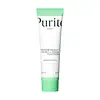What's inside
What's inside
 Key Ingredients
Key Ingredients

 Benefits
Benefits

 Concerns
Concerns

 Ingredients Side-by-side
Ingredients Side-by-side

Water
Skin ConditioningSodium Methyl Cocoyl Taurate
CleansingCocamidopropyl Betaine
CleansingCocamide Mipa
EmulsifyingGlycol Distearate
EmollientParfum
MaskingAcrylates Copolymer
Polyquaternium-10
DMDM Hydantoin
PreservativeCitric Acid
BufferingPolyquaternium-7
PEG-4 Laurate
EmulsifyingTetrasodium EDTA
Amodimethicone
Linalool
PerfumingC11-15 Pareth-7
EmulsifyingBenzyl Salicylate
PerfumingArgania Spinosa Kernel Oil
EmollientCocos Nucifera Oil
MaskingIodopropynyl Butylcarbamate
PreservativeTrideceth-12
EmulsifyingGlycerin
HumectantLaureth-9
EmulsifyingSodium Chloride
MaskingPPG-12-Buteth-16
Skin ConditioningWater, Sodium Methyl Cocoyl Taurate, Cocamidopropyl Betaine, Cocamide Mipa, Glycol Distearate, Parfum, Acrylates Copolymer, Polyquaternium-10, DMDM Hydantoin, Citric Acid, Polyquaternium-7, PEG-4 Laurate, Tetrasodium EDTA, Amodimethicone, Linalool, C11-15 Pareth-7, Benzyl Salicylate, Argania Spinosa Kernel Oil, Cocos Nucifera Oil, Iodopropynyl Butylcarbamate, Trideceth-12, Glycerin, Laureth-9, Sodium Chloride, PPG-12-Buteth-16
Water
Skin ConditioningCaprylic/Capric Triglyceride
MaskingMacadamia Ternifolia Seed Oil
EmollientSqualane
EmollientButylene Glycol
HumectantCetearyl Alcohol
EmollientGlycerin
HumectantCentella Asiatica Extract
CleansingNiacinamide
Smoothing1,2-Hexanediol
Skin ConditioningPotassium Cetyl Phosphate
EmulsifyingCeramide NP
Skin ConditioningMadecassic Acid
Skin ConditioningAsiaticoside
AntioxidantAsiatic Acid
Skin ConditioningBehenic Acid
CleansingBetaine
HumectantTromethamine
BufferingButyrospermum Parkii Butter
Skin ConditioningHydrogenated Lecithin
EmulsifyingPalmitic Acid
EmollientStearic Acid
CleansingCaprylyl Glycol
EmollientCandida Bombicola/Glucose/Methyl Rapeseedate Ferment
AntimicrobialCarbomer
Emulsion StabilisingXanthan Gum
EmulsifyingHydroxyethylcellulose
Emulsion StabilisingOryza Sativa Germ Oil
EmollientCocos Nucifera Oil
MaskingSodium Carbomer
Emulsion StabilisingAdenosine
Skin ConditioningPhytosphingosine
Skin ConditioningMyristic Acid
CleansingArachidic Acid
CleansingTremella Fuciformis Extract
HumectantPerilla Ocymoides Seed Extract
AntioxidantSodium Hyaluronate
HumectantBeta-Glucan
Skin ConditioningWater, Caprylic/Capric Triglyceride, Macadamia Ternifolia Seed Oil, Squalane, Butylene Glycol, Cetearyl Alcohol, Glycerin, Centella Asiatica Extract, Niacinamide, 1,2-Hexanediol, Potassium Cetyl Phosphate, Ceramide NP, Madecassic Acid, Asiaticoside, Asiatic Acid, Behenic Acid, Betaine, Tromethamine, Butyrospermum Parkii Butter, Hydrogenated Lecithin, Palmitic Acid, Stearic Acid, Caprylyl Glycol, Candida Bombicola/Glucose/Methyl Rapeseedate Ferment, Carbomer, Xanthan Gum, Hydroxyethylcellulose, Oryza Sativa Germ Oil, Cocos Nucifera Oil, Sodium Carbomer, Adenosine, Phytosphingosine, Myristic Acid, Arachidic Acid, Tremella Fuciformis Extract, Perilla Ocymoides Seed Extract, Sodium Hyaluronate, Beta-Glucan
 Reviews
Reviews

Ingredients Explained
These ingredients are found in both products.
Ingredients higher up in an ingredient list are typically present in a larger amount.
Cocos Nucifera Oil is obtained from the kernels of the coconut fruit. In other words, this is coconut oil.
Coconut Oil is rich in fatty acids with lauric acid making up the majority of these. It also contains linoleic acid. Due to this high fatty acid content, coconut oil helps trap moisture and soften skin.
Despite being antibacterial, coconut oil may not be great for acne-prone skin. It is comedogenic and may clog pores. This ingredient may not be safe for malassezia or fungal acne.
Note: Coconut Oil should not replace your sunscreen for UV protection. Studies show it only blocks about 20% of UV.
This oil is non-volatile and has a light scent.
The term 'fragrance' is not regulated in many countries. In many cases, it is up to the brand to define this term. For instance, many brands choose to label themselves as "fragrance-free" because they are not using synthetic fragrances. However, their products may still contain ingredients such as essential oils that are considered a fragrance.
Learn more about Cocos Nucifera OilGlycerin is already naturally found in your skin. It helps moisturize and protect your skin.
A study from 2016 found glycerin to be more effective as a humectant than AHAs and hyaluronic acid.
As a humectant, it helps the skin stay hydrated by pulling moisture to your skin. The low molecular weight of glycerin allows it to pull moisture into the deeper layers of your skin.
Hydrated skin improves your skin barrier; Your skin barrier helps protect against irritants and bacteria.
Glycerin has also been found to have antimicrobial and antiviral properties. Due to these properties, glycerin is often used in wound and burn treatments.
In cosmetics, glycerin is usually derived from plants such as soybean or palm. However, it can also be sourced from animals, such as tallow or animal fat.
This ingredient is organic, colorless, odorless, and non-toxic.
Glycerin is the name for this ingredient in American English. British English uses Glycerol/Glycerine.
Learn more about GlycerinWater. It's the most common cosmetic ingredient of all. You'll usually see it at the top of ingredient lists, meaning that it makes up the largest part of the product.
So why is it so popular? Water most often acts as a solvent - this means that it helps dissolve other ingredients into the formulation.
You'll also recognize water as that liquid we all need to stay alive. If you see this, drink a glass of water. Stay hydrated!
Learn more about Water